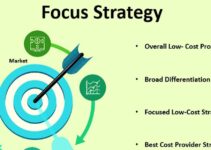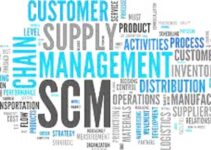Introduction
Production, manufacturing, development, sale, and operations are the main activities that every business or company performs regardless of its size. After preparing and launching the product, the next task of the management is to create a product development strategy. Today, we’ll discuss what is a product development strategy; its types, significance, risks/benefits, examples, and how to choose a make or buy decision.
Significance of Product Development Strategy
The reason product development strategy is significant is that it relies on market research for the sale and plans development of the product. The strategy comprises various techniques and methodologies that you’re going to use at the product development stages. It would help you to focus on various strategies and face challenges. It allows you to grow your business and adjust your current product.
What is a product development strategy?
It’s a part of the corporate strategy and its role is to develop the new product along with raising funds and outlining goals and objectives. The P development strategy launches the new product at the best possible offer in order to gain a competitive advantage in terms of productivity, growth, sales, revenue, and profitability.
The P development strategy provides you an opportunity to increase the sale of the current product with new features and functions. It lowers the risk factor in the product development stages, develops a link between the product and the market, and reconstructs the product line.
Market research and market strategy are very important in product development. Some of the elements in product development are banding, platform, and technology. They permit you to disrupt the competition and surprise the customers by introducing a series of new products.
Types of Product Development Strategies
Various companies develop their products differently by adopting different strategies. Some focus on technology, feature, innovation, and others work on something else. It doesn’t matter whatever strategy you’re implementing, you should be clear about it. However, when it comes to introducing the product into the market, some of the main types of product development strategies are as follows;
Updating Existing Market
Here you take the new product, update some of its features, and launch it in the market with the promotional campaign of updated features. The goal is to add and update such features and functions that would influence and impact the target customer market. Therefore, you should keep looking for such features that customers want in its product.
Increasing Product Value
Customers purchase the product in order to gain value from the product that it offers. Companies expand their product value by increasing the quantity, offering customer support, and premium features and updates. Those upgraded features can attract the attention of new customers and you may offer a better deal to the existing customers.
Trial
A free sample and a trial offer is the best technique to convince customers to try your product for free, and then buy it with money. The new customers in the target would like to check the quality of the product before purchasing it. The free sample is the best way to offer premium features for free. The customers get the idea of what they would get receive from buying it.
Customize & Specialize
Customizing allows you to specialize your product in a certain way so that you can target a specific segment of the target market. You can personalize the product offer in order to better address the needs and wants of customers. It would allow you to motivate your customers to purchase your product.
Package Deal
When you introduce a package deal, then it instantly attracts the attention of the target market. With a package deal, you can offer them a lot of offers like free samples to select from their product, discounts, and bundles. The idea behind the package deal is that it’s a limited-time offer and customers wouldn’t get it from anywhere.
New Product Line
It’s when you create a new product that is relevant to your current product line. While doing so, you should offer such features in the product that the customers are looking for it. Only the new product line would expand the sale if it would complement the features of the current product.
Changing Ideas
You can change the idea and the definition of the product. It would allow you to target non-responsive customers with the new product idea. In order to do that, you should conduct thorough market research to know the needs and wants of customers, so that you could develop the product accordingly.
New Market
Companies sell various types of products in different markets. The interest P development strategy is to launch your current product in various geographic markets to target new customers. You can change your focus from consumers to businesses by changing the demographic and the target market anytime.
Risks/Benefits of Product Development Strategy
The product development strategy offers some benefits and they’re as follows;
Risks
You can manage the risk factor with the P development strategy and ask users for their feedback at the prototype phase and at the assessment stage of commercialization.
Lower Cost
Low cost offers the company a plethora of advantages like it could change the material, limited features, and redesigning the product at the product stage.
Quality Reputation
If you’re following the P development strategy, then it would allow you to keep upgrading the quality of the product with its new version. It helps the company to gain a positive reputation in the market and increasing sales along with.
Improving Performance
You can improve the market reputation, goodwill, and quality of the product, but also win the trust of stakeholders and investors with this strategy. All of these factors make it easier for the company to raise financial capital for future projects.
Manage Success
The P development is a risky strategy to implement. However, you can minimize the riskiness if you could focus on satisfying the needs and wants of customers. You can avoid launching non-usable features that customers don’t want and the advanced tech development.
Examples of Product Development strategy
The examples of the world’s leading companies that followed the product development strategy are as follows;
McDonald’s
McDonald’s is the world’s top fast-food brand and the company follows the P development strategy. Like;
- Localization: McDonald’s provides locally famous dishes in different regions like McKroket in Netherlands and Burger without cheese in India.
- Traditional dishes: McDonald’s is the world’s leading fast-food brand and the company earned the reputation through hamburgers, cheeseburgers, and big Mac. The brand can’t think of changing these dishes.
- Seasonal dishes: McDonald’s also provides seasonal dishes to the customer quarter and annually and they come for a few days and then gone. It is to change the taste of customers by offering them something new.
IKEA
IKEA is a furniture brand and the company offers quality products at a low price. The brand has a worldwide supply chain system that manages various parts at great distances.
Microsoft
Microsoft is the world’s leading tech company and the tech brand is running its business in the following areas;
- Business process & productivity
- Intelligence cloud
- Personal cloud
The product development steps of Microsoft are as follows;
- Evaluating ideas
- Concept development and testing
- Market development
- Business analysis
- Manufacturing and production
- Commercialization
Microsoft knows that its strategies don’t work always. That’s why the company stopped its investment in Twitch and changed its focus on Microsoft Mixer.
Google also follows the product development strategy and has been introducing new services and tools over the years. Some developments of Google became successful and the others weren’t;
- Google works on multiple projects at once and the success rate is two out of five
- Google asks for feedback from the user at the time of launching a new product
- The company has promoted a culture of innovation and creativity and you can do a job without having a title
How to choose a Make-or-Buy Decision
The make-or-buy decision depends on many factors; tech strategic value and the production cost is the top. The other factor you should remember is the development of technology is significant for the growth of the company. However, the operations of the production process are also important in product development and purchase decision.
Conclusion: What is a product development strategy?
After an in-depth study of what is a product development strategy; its types, significance, and examples, we’ve realized that the P development strategy is very effective for upgrading the product. If you’re planning to develop the product, then keep in mind its various types and how to develop it in different ways.

Ahsan Ali Shaw is an accomplished Business Writer, Analyst, and Public Speaker. Other than that, he’s a fun loving person.


